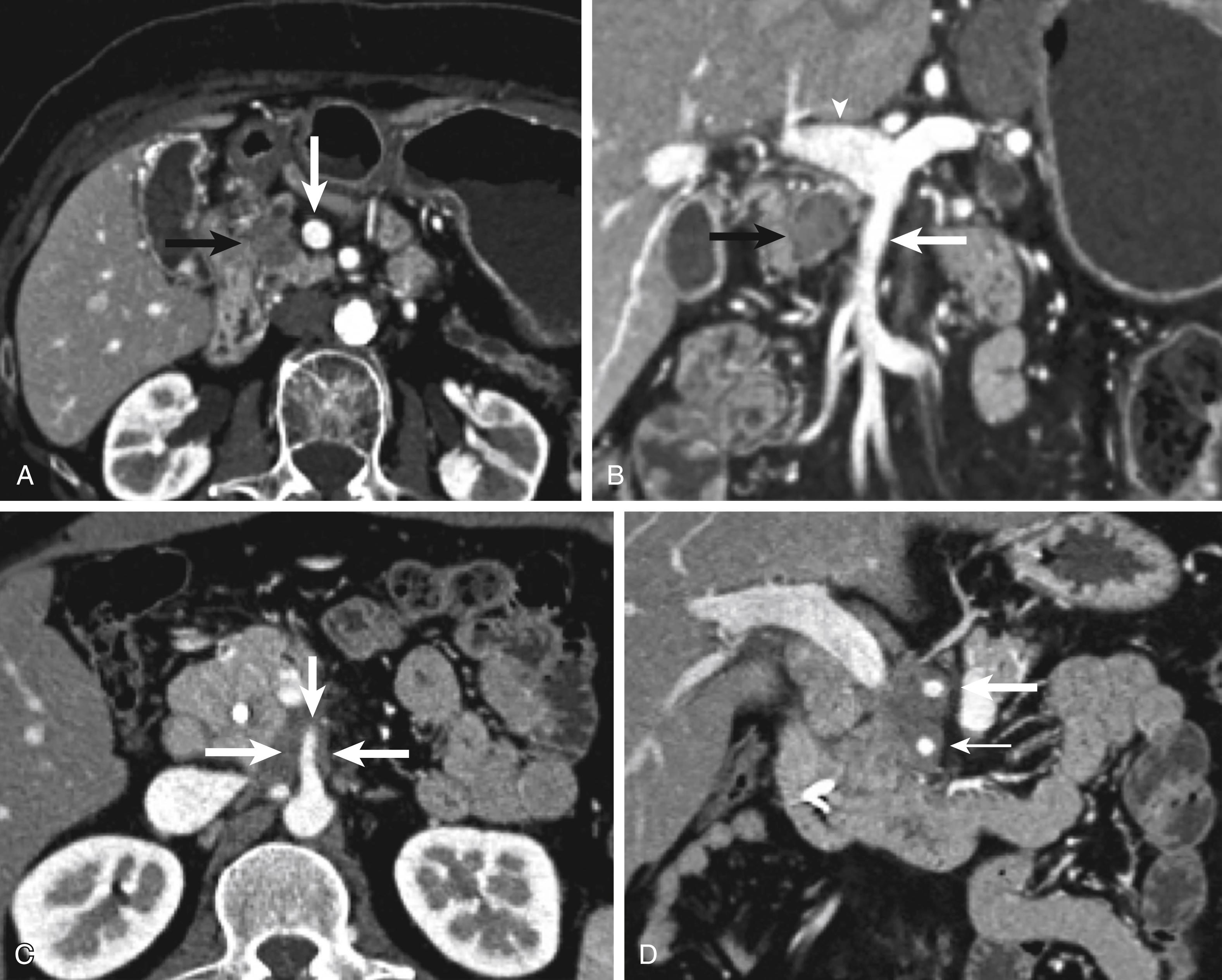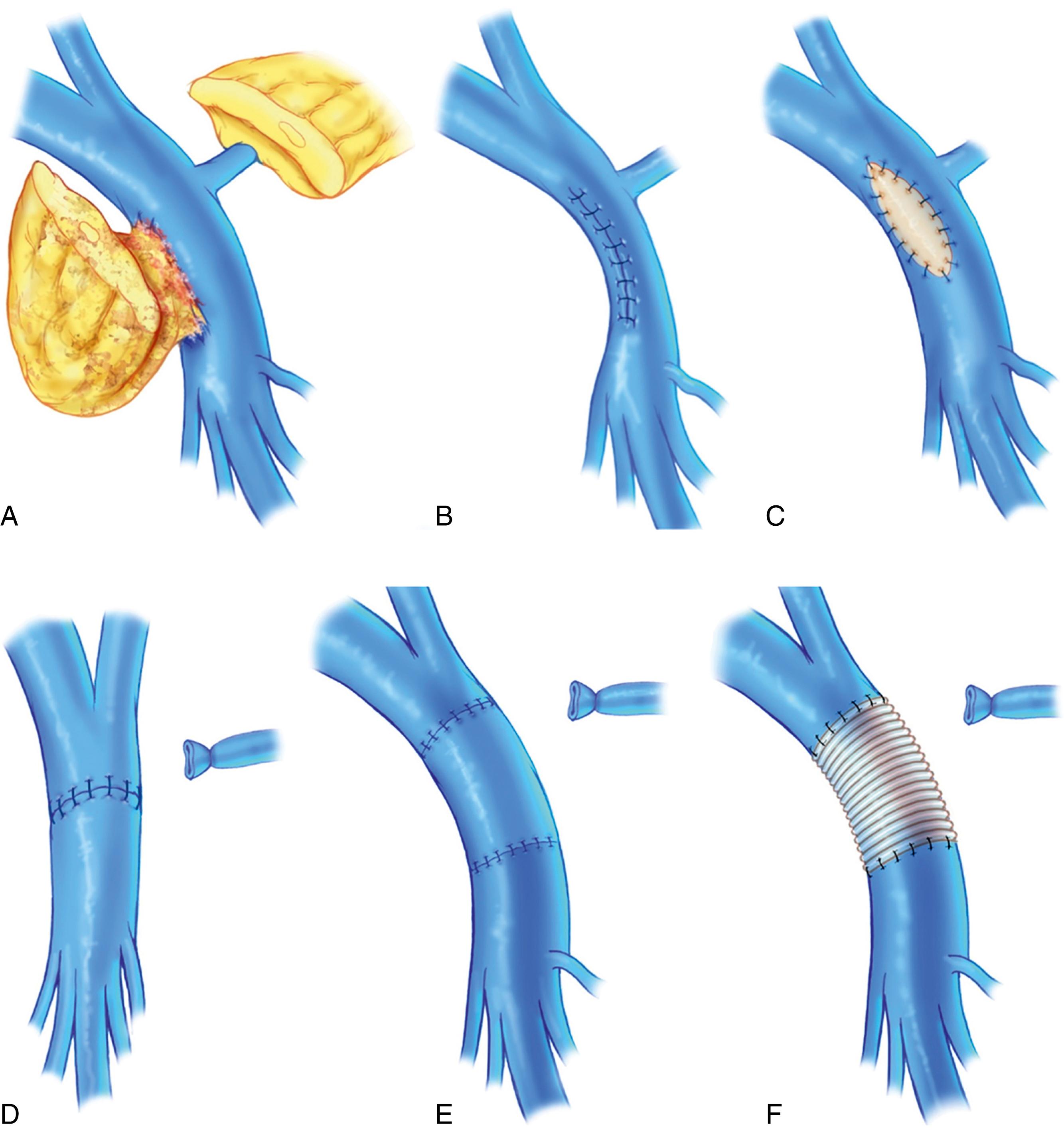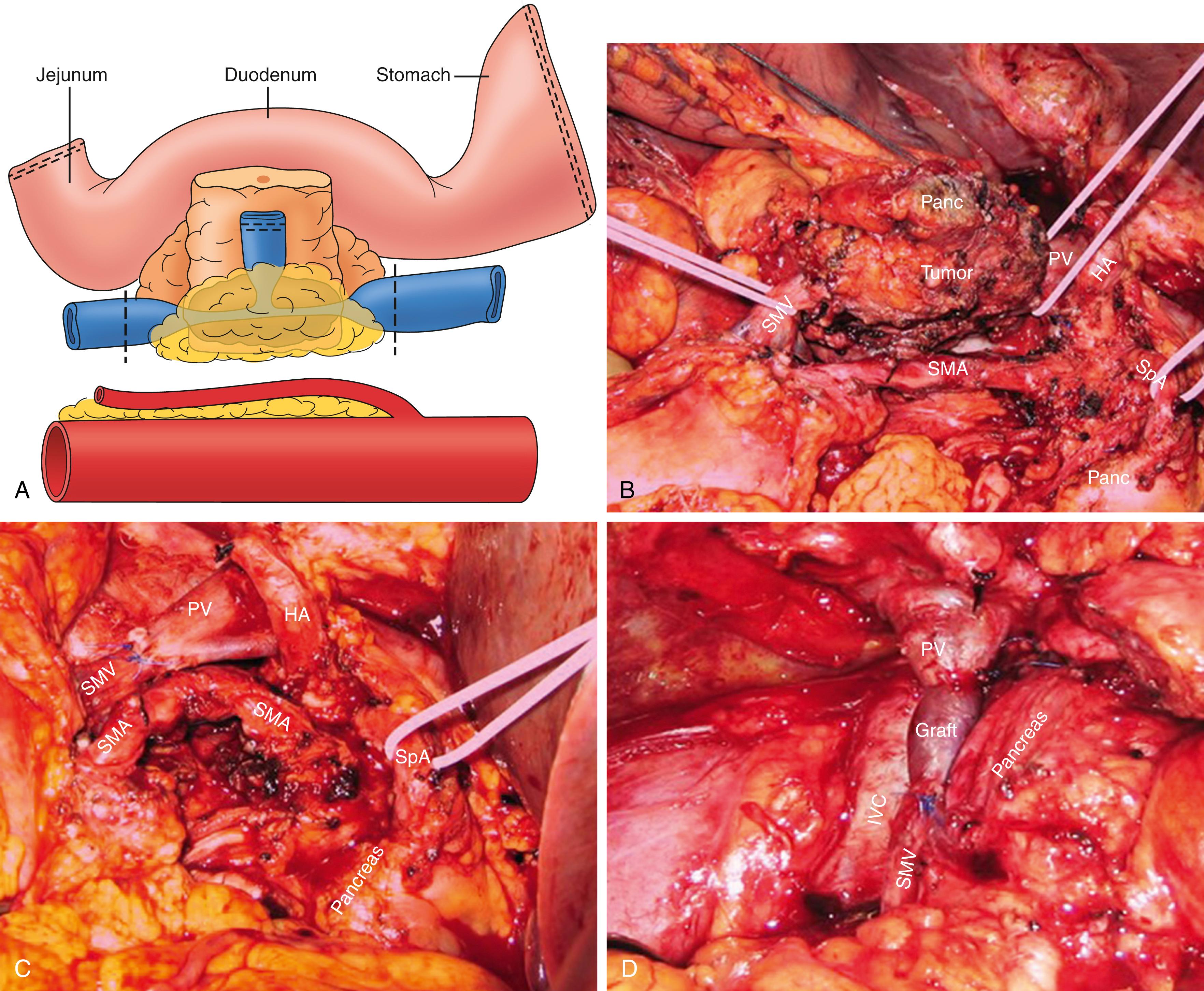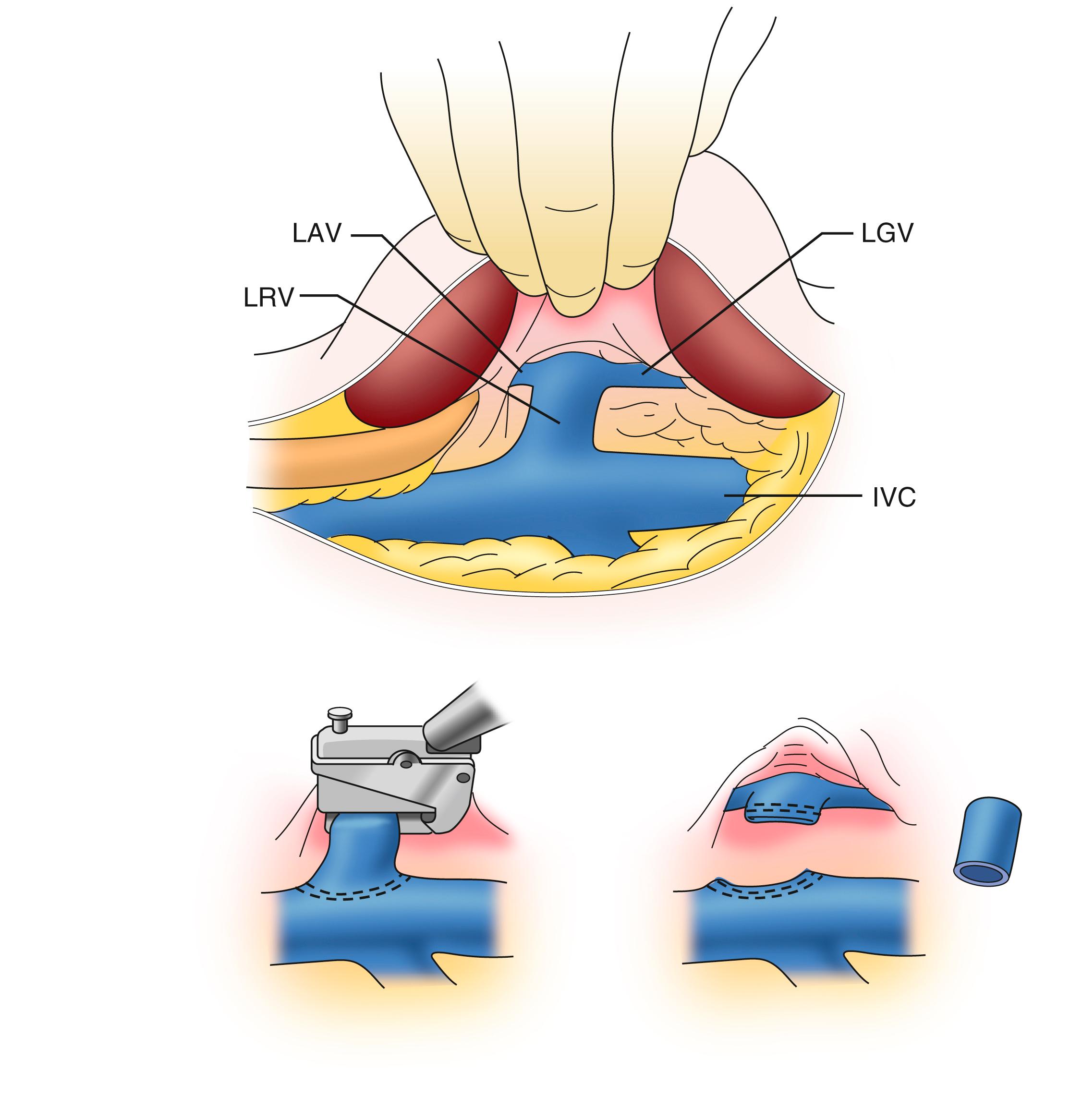Physical Address
304 North Cardinal St.
Dorchester Center, MA 02124
Pancreatic cancer is currently the fourth leading cause of cancer death within the United States with 56,770 new cases and 45,750 deaths estimated for 2019. Five-year survival remains poor at an estimated 10%. Improving long-term survival is therefore the goal of care, with surgery as a pivotal portion of multidisciplinary care. Preoperative surgical resectability can be classified as follows: unresectable (metastatic disease, encasement of the superior mesenteric artery [SMA] or hepatic arteries, lack of venous reconstructive options); borderline resectable (superior mesenteric vein [SMV]/portal vein [PV] tumor–vessel interface ≥180 degrees of vessel wall circumference, and/or reconstructable occlusion; SMA tumor–vessel interface <180 degrees of vessel wall circumference; celiac artery tumor–vessel interface <180 degrees of vessel wall circumference; common hepatic artery tumor–vessel interface without involvement of proper hepatic artery and/or celiac artery); or resectable. , Recent definitions of borderline resectable disease also include serum carbohydrate antigen (CA) 19-9 levels (with >500 units/mL concerning for unproven distant metastases or lymph node metastases) and Eastern Cooperative Oncology Group (ECOG) performance status (surgical resection for borderline tumors recommended in patients with ECOG status of two or more).
Neoadjuvant chemotherapy and radiation may reduce the extent of vascular involvement in borderline disease, but continued involvement necessitates vascular resection and reconstruction as part of the pancreaticoduodenectomy. In an analysis of over 10,000 pancreatectomies from the National Inpatient Sample database, patients with vascular reconstructions (4% of all) experienced increased major complications, but no difference in mortality. Even with increased morbidity, vascular resection represents the only curative option for patients with borderline resectable disease. Indeed, patients who undergo pancreaticoduodenectomy with vascular resection have equivalent postoperative survival to those who undergo pancreaticoduodenectomy alone and superior survival to those with unresectable disease.
Among patients undergoing resection of the pancreatic head when there is potential for a venous resection/reconstruction, one should consider an artery-first approach. , Our preference is to dissect and ligate all SMA branches/perivascular connective tissue to the pancreas prior to undertaking SMV/PV clamping or venous resection. In brief, this technique can be accomplished by rotating the specimen to the left by widely mobilizing the right colon to fully expose the duodenum in its entirety and dividing the perivascular connective tissue along the SMA in a parallel fashion from caudal to cranial. Attachments between the SMA and uncinate are divided to expose the lateral border of the PV–SMV. After the specimen has been freed from the SMA the only tissue remaining should be venous attachments. Benefits include not only the potential for lower blood loss and facilitation of an en bloc resection but also increased mobility of the specimen and ease of venous resection.
The surgeon should have a clear understanding of the need for venous reconstruction based on high quality preoperative cross-sectional imaging (triple contrast phase along with thin cuts through the pancreas). Assessment of SMV/PV infiltration by a pancreatic tumor is best assessed on the portal venous phase. Imaging findings highly sensitive for detection of PV/SMV invasion include radiologic absence of a fat plane between the tumor and the vessel, length of tumor involvement of greater than 5 mm, venous occlusion with formation of collateral vessels, presence of a “teardrop sign” in the SMV (“tethering” of the SMV by the tumor), and irregularity of the wall of the blood vessel ( Fig. 195.1 ). Imaging findings highly sensitive for unresectability include circumferential involvement of a vessel by more than 180 degrees (see Fig. 195.1 ).

True venous involvement of the SMV, PV, or their confluence can be confirmed either at the time of tunneling under the pancreatic neck or following the creation of the tunnel (at the time the surgeon is controlling vessels from the SMV/PV, SMA to the head of the pancreas and uncinate process). Vein resections can either be performed by excising the right lateral portion of the SMV or PV or a segment of the SMV, after gaining venous control. Generally, options to proceed include locally resecting a portion of the right lateral aspect of the SMV/PV (tangential resection) and repairing either with interrupted sutures in a transverse fashion or with a saphenous vein patch, segmental resection and primary anastomosis, or segmental en bloc resection of tumor and vein followed by placement of an interposition graft ( Fig. 195.2 ). Data suggest SMV or PV resection with primary end-to-end reconstruction or transverse venorrhaphy results in a greater patency rate as compared to lateral/longitudinal venorrhaphy, patch venoplasty or interposition grafting for short (<3 cm) reconstructions. , In a series of 173 patients undergoing PV reconstruction among 6522 patients who underwent pancreatectomy over a 45-year period at the Johns Hopkins Hospital, use of prosthetic grafts (as well as long operative times) was a risk factor for postoperative PV thrombosis.

As a general principle, it is of paramount importance to critically analyze the site of tumor infiltration of the vein preoperatively and intraoperatively. Wide mobilization of the liver and retroperitoneum will allow approximately a 3-cm gap to be bridged by a primary end-to-end repair. Proximal vein involvement can typically be handled more easily, as the vessel diameter is large enough to create a sufficient anastomosis. However, in cases of venous involvement distal to the first jejunal branch, the decreasing diameter of the SMV may limit the technical possibility to perform a venous resection. Occasionally, however, the SMV, PV, splenic vein (SV), and confluence will all be involved by tumor. This pattern of venous invasion may be found when resecting tumors of the pancreatic neck or medial aspect of the head of the pancreas. In such cases when all three venous structures are involved, a total pancreatectomy with SMV to PV reconstruction can be considered. In this setting, the venous gap may exceed 3 cm and interposition grafting may be required.
Tangential resection (right lateral SMV/PV partial resection) is well-suited for when there is involvement of the medial aspect of the SMV/PV junction opposite to the splenic vein. Although certain circumstances preclude this technique and a formal segmental resection must be performed, if possible a tangential resection should be utilized. Key technical aspects of this procedure include proximal and distal control of the SMV/PV and splenic vein with vascular clamps, achieving a grossly negative margin of vein and constructing a vein patch. If there is a question of leaving a positive margin, a segmental resection should be utilized. Additionally, if only a small portion of the vein is required for resection, the vascular clamps can be applied in a “V” format, angling in behind the involved area of vein. If a larger portion of the vein is required, a Satinsky clamp can be applied parallel to the vein. Close communication with the anesthesia team at the time of PV clamping is important to avoid potential hypotension and any diminished mesenteric venous flow.
The great saphenous vein (GSV) should always be harvested prior to PV clamping in order to expedite the reconstruction and limit the amount of portal flow disruption. It is paramount to plan and prioritize sequential steps to allow for safe and efficient venous repair. GSV harvest is accomplished by exposing the previously prepped groin and creating a longitudinal incision medial to the femoral artery. The GSV is then identified at its junction with the femoral vein (saphenofemoral junction), mobilized distally for an appropriate length of 5–6 cm, and ligated proximally and distally; this segment of GSV is then removed and placed in heparinized saline.
To complete the vein patch, the GSV should be opened longitudinally, cut to size and spatulated. The valves should be lysed to avoid directional flow issues. Following clamping, the patch is then grafted using 5-0 or 6-0 polypropylene suture in a running technique. Finally, an air knot of one-third the diameter of the PV is tied in order to allow for venous distention (see Fig. 195.2C ).
Segmental resection with primary end-to-end anastomosis has proven to have the highest patency rates of all reconstruction methods. Certain factors must be appropriate in order to complete a primary end-to-end anastomosis following a segmental resection. First and foremost, the anastomosis must be created without tension. This can be facilitated by mobilization of the SMV (along the root of the small bowel mesentery) and PV (superior to the pancreas) by ligating and dividing small branches along the length of these vessels. Additionally, further length on the PV can be gained through hepatic mobilization; the right and left liver should be mobilized by incising the triangular and cardinal ligaments along with the hepatocolic and falciform ligaments. If further length is required, the midgut can also be mobilized by creating a dissection plane immediately anterior to the wall of the aorta and IVC. Such preparatory steps should precede the interruption of portal venous flow to avoid venous congestion.
Proximal and distal control of the PV and SMV is obtained with pediatric vascular clamps, the vein transected, and the specimen removed. The previous mobilization maneuvers should permit a tension-free primary anastomosis. The anastomosis is undertaken utilizing a running 5-0 or 6-0 polypropylene suture on the back wall and simple suture repair on the front wall. Finally, an air knot of one-third the diameter of the PV is tied in order to allow for venous swelling and to prevent an hour-glass formation of the anastomosis. Typically, a segmental defect of ≤2–3 cm can be repaired with a primary anastomosis using these principles (see Fig. 195.2D for schematic and Fig. 195.3C for intraoperative photograph).

When segmental resections of the PV or the SMV longer than 3 cm is required, we recommend the use of a vascular conduit as an interposition graft (see Fig. 195.2E and F for schematic and Fig. 195.3D for intraoperative photograph). Conduit selections include: autologous vein (left renal vein, internal jugular [IJ] vein), cryopreserved vein, bovine pericardium, peritoneum, or synthetic grafts, but cryopreserved vein, bovine pericardium, peritoneum, and synthetic grafts are not considered optimal conduits for PV reconstruction. Although saphenous vein is an excellent material for patch angioplasty, it is not an ideal conduit for PV/SMV reconstruction owing to size mismatch. Our conduit preference for interposition grafting in the setting of pancreatectomy is autologous vein utilizing the left renal vein or splenic vein.
Traditionally, the left renal vein has been used to repair venous structures (PV, IVC or hepatic vein) during resection of hepatic hilar cholangiocarcinomas. Extrapolating this technique to the pancreas offers distinct advantages for venous reconstruction. Importantly, previous experience has confirmed the safety of left renal vein ligation distal to the insertion of the left adrenal and gonadal veins, which provide collateral venous drainage for the left kidney. , Proximally, the vein is divided flush with the IVC, which generally provides a 3- to 4-cm venous interposition graft ( Fig. 195.4 ). Division of the vein is undertaken with a linear (transverse anastomosis) stapling device. Following harvest, the venous segment should be maintained in heparinized saline until reconstruction. Interposition reconstruction should then be undertaken with 5-0 or 6-0 polypropylene suture in a running technique in an end–end fashion without spatulation (see Fig. 195.2E and Fig. 195.3D ). Advantages to the left renal vein graft include the ability to expose the vein within the same operative field, eliminating a second operative field as would be required to harvest the IJ vein. Additionally, the caliber and wall thickness of the vein is similar to the PV, therefore providing ease in handling and suturing. ,

IJ vein graft remains a valid option for segmental reconstruction. However, unlike the left renal vein, a separate surgical field is required. Harvest of the IJ vein is performed with the patient’s head turned away from the surgeon and the neck slightly extended. An incision on the anterior border of the sternocleidomastoid muscle (SCM) is created and taken down to the carotid sheath. This can be facilitated by retracting the SCM laterally. Next, the carotid sheath should be entered and the facial vein ligated between ties. Next, the vagus nerve should be identified, keeping it free from injury. An appropriate length of IJ vein is then chosen and ligated between ties. Following harvest, the venous segment should be maintained in heparinized saline until reconstruction. Interposition reconstruction should then be undertaken with 5-0 or 6-0 polypropylene suture in a running technique in an end–end fashion without spatulation (see Fig. 196.2E and Fig. 196.3D).
Become a Clinical Tree membership for Full access and enjoy Unlimited articles
If you are a member. Log in here